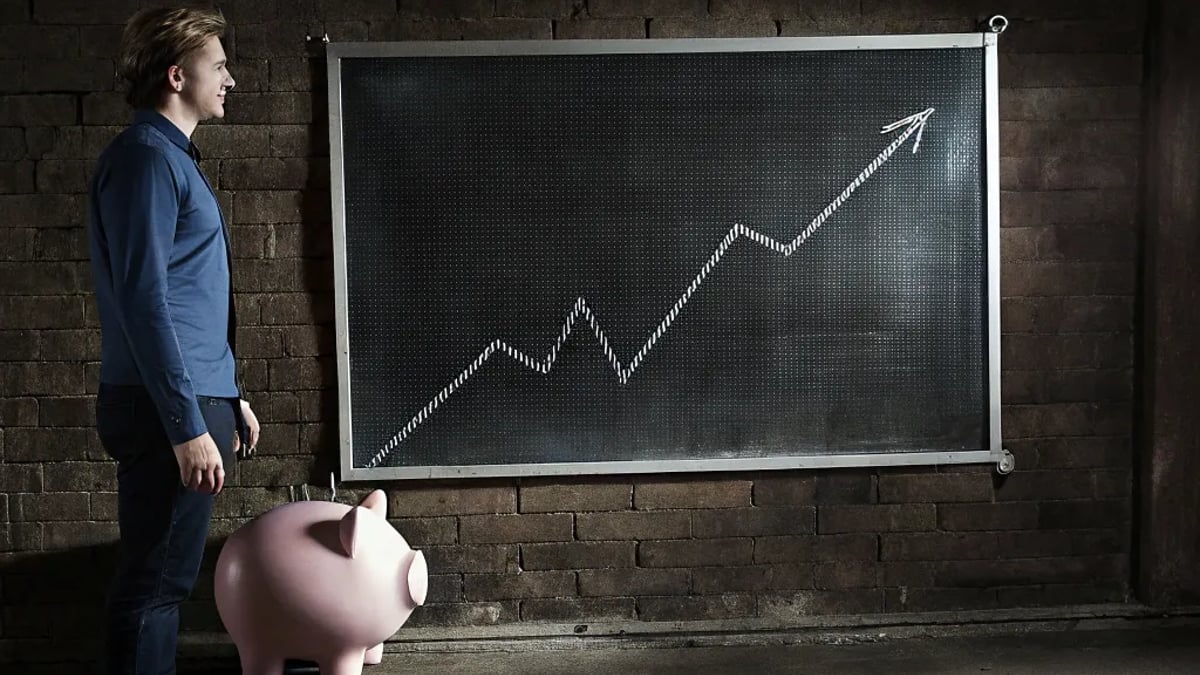
Taking those first steps into investing can feel overwhelming, especially when you're working with a modest amount like $100. But here's the truth – you don't need thousands of dollars to begin building wealth. Starting small allows you to learn the fundamentals while minimizing risk as you gain confidence in your investment decisions.
Why Start with Just $100?
The investing world has dramatically changed over the past decade. Gone are the days when you needed significant capital and a stockbroker to purchase investments. Today's financial technology has democratized investing, making it accessible to almost anyone.
Starting with a small amount like $100 offers several advantages:
- Low pressure learning: You can make mistakes without devastating financial consequences
- Building the habit: Establishing regular investing routines matters more than initial amounts
- Psychological wins: Seeing even small growth can motivate continued investing

"The best time to plant a tree was 20 years ago. The second best time is now," goes the old saying. This applies perfectly to investing – starting with whatever you have today is better than waiting until you have "enough."
Choosing the Right Investment Platform
Your first decision involves selecting where to invest your $100. Several platforms cater specifically to beginners with minimal starting capital:
Micro-Investing Apps
Apps like Acorns, Stash, and Robinhood have revolutionized small-dollar investing. Acorns, for instance, rounds up your everyday purchases and invests the spare change. With just $5, you can open an account and start building a diversified portfolio.
Robinhood offers commission-free trading of stocks, ETFs, and even cryptocurrency. The platform's intuitive interface makes it appealing for first-timers, though it lacks some educational resources found elsewhere.

Traditional Brokerages with Low Minimums
Established brokerages like Fidelity and Charles Schwab have eliminated minimum investment requirements for many of their accounts. Fidelity, for example, offers commission-free stock trading and access to thousands of no-minimum investment mutual funds.
As Tori Dunlap of Her First $100K points out, "The investment platform you choose should align with your goals and comfort level. Don't feel pressured to use what everyone else is using."
What Can You Actually Buy With $100?
With your platform selected, here's what your first $100 can purchase:
Fractional Shares

One of the most revolutionary developments for small investors is fractional share investing. Rather than needing $180+ for a single share of Apple, you can invest $10 and own a proportion of that share.
Platforms like Schwab, Fidelity, and most micro-investing apps offer fractional shares of popular stocks and ETFs. This allows for immediate diversification even with minimal capital.
Exchange-Traded Funds (ETFs)
ETFs represent one of the best options for beginning investors. These funds track indexes like the S&P 500 or specific sectors while offering instant diversification.
Many broad-market ETFs have expense ratios below 0.1%, meaning very little of your investment goes toward management fees. With $100, you could purchase fractional shares of several ETFs covering different markets.
Dividend Reinvestment Plans (DRIPs)
Some companies offer direct investment programs allowing you to purchase stock directly from them, often with very low minimums. Companies like 3M, Coca-Cola, and Home Depot offer these programs, sometimes with no commission fees.
Building an Investment Habit
Starting with $100 is just that – a start. The real power comes from consistency. According to Merrill Edge research, investing $50 monthly for 30 years with an average 7% return could grow to over $60,000.
Try automating your investments. Most platforms allow you to schedule regular transfers from your bank account. Even $25 weekly adds up to $1,300 annually, which compounds significantly over time.
What About Retirement Accounts?
If your goal is long-term wealth building, consider placing your $100 in a tax-advantaged retirement account like a Roth IRA. Many brokerages offer these accounts with no minimum balance requirements.
The Roth IRA particularly benefits younger investors since contributions grow tax-free, and qualified withdrawals in retirement incur no taxes. You won't notice the tax advantages immediately, but they become substantial over decades.
Common Questions About Starting Small
Can I really make money starting with just $100?
Yes, but with realistic expectations. Your $100 might grow to $107-$110 in a year with average market returns. While that seems small, it's the habit and knowledge you're building that matters most. As your contributions grow, so will your returns.
What's the biggest mistake beginners make?
According to financial advisors, it's either trying to pick winning individual stocks or checking account balances too frequently. Markets fluctuate daily, but successful investing requires a long-term perspective. Your $100 investment shouldn't be money you'll need next month.
Should I focus on paying off debt first?
It depends on the interest rate. High-interest debt (like credit cards charging 15%+) should typically be prioritized over investing. However, contributing small amounts while paying down lower-interest debt helps build the investing habit early.
Final Thoughts
Starting your investment journey with $100 won't make you rich overnight, but it puts you on the path toward financial growth. The knowledge and habits you develop now will serve you throughout your life as your investment capacity increases.
Remember that consistency trumps amount when you're beginning. A regular $100 monthly investment will significantly outperform a one-time $1,200 investment over time.
Disclaimer: This article is for informational purposes only and does not constitute financial advice. Consider consulting with a financial professional regarding your specific situation before making investment decisions.
Tags

About Liam Davenport the Author
Liam Davenport is a seasoned tax consultant with over 15 years of experience navigating complex tax codes and optimizing strategies for both individuals and corporations. His expertise lies in deciphering ever-changing tax regulations and crafting personalized tax solutions for his clientele.
Recommended Articles
7 Comic Books From the Past That Could Make You Rich
Discover 7 vintage comic books that could become valuable collectibles and potential investments. Learn what makes them sought after by collectors.
What Collectibles Are Actually Worth Investing In?
Discover the most valuable collectibles to invest in and learn how to navigate the collectible market effectively for long-term gains.
7 Rare Animals Unexpectedly Caught on Trail Cameras
Discover 7 rare animals revealed by trail cameras and learn about their importance in wildlife conservation efforts around the globe.
Master Money: The Amazon Picks for Finance Beginners
Kickstart your financial journey with Amazon's top picks for beginners. Discover essential books, master budgeting, simplify investing, and gain practical money management tips.
Amazon Top Picks: Boho Tops for Women. The Effortless Style Trend You’ll Love.
Discover boho tops for women, an effortless style trend for comfort and chic. Learn bohemian fashion features, styling tips, and where to find your perfect top.




